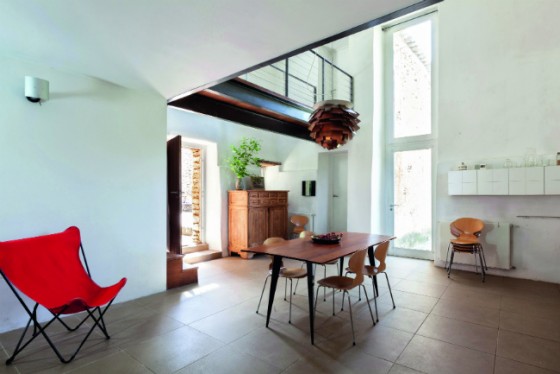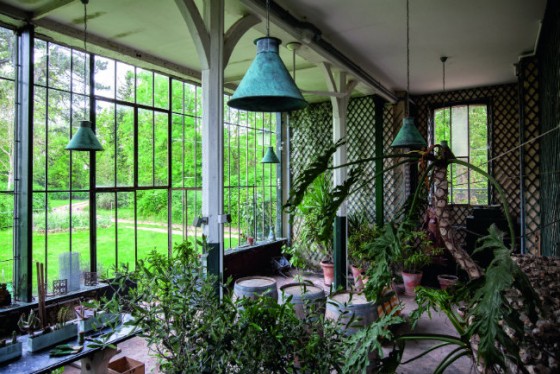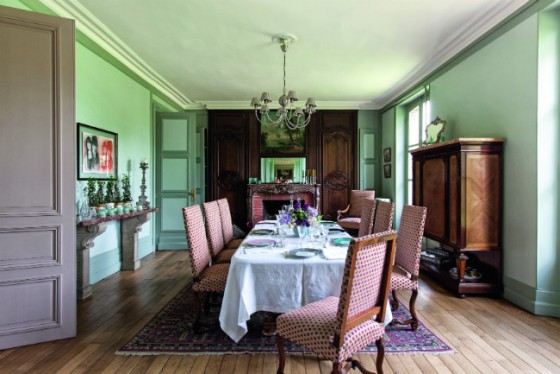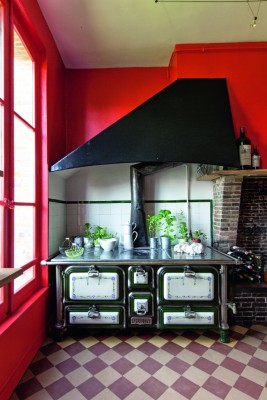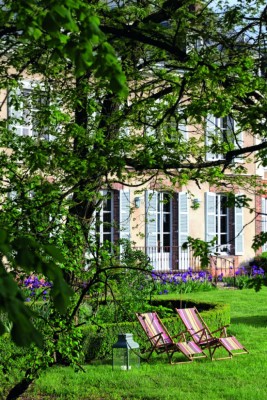An Inside Peek: New Vintage French Interiors

Coming home. It’s a return to your origins, a safe haven and a space where you can be secure with your friends and family. It’s a private retreat, but also a place to be shared with close companions and others who are just passing through. The derivation of maison, the French word for house, is telling. Instead of using the Latin word for house (casa) as its base, it reflects the subtler implications of the Latin verb manere, used to express the act of staying in a place, or stopping to rest.
Such is the origin of the French word that designates this living space. It may be a Provençal mas, a longère in Normandy or Brittany, a manor, a farmhouse, an inn, a château, a grand hôtel particulier or a simple country dwelling. It may be small or spacious. It may be an everyday residence, a vacation retreat, or a dream house of the future. The range of possibilities is an inspiration in itself. The important thing is feeling at home and at ease.
On your quest to find this perfect destination, you’ll tirelessly search, visit, stay and explore. You’ll peer through windows, open the shutters a little and let the light pour in. Unexpectedly falling in love, you’ll retain the best elements: the architecture, the walls. You might alter the space –enlarge it perhaps, or renovate the kitchen and the bedrooms. Sometimes all that’s needed is a coat of paint. But, to get things just right, you’ll have to perfect the décor as well.
Furnish it your own way, hunt for antiques in a range of styles. And the garden, where living spaces open out into nature, shouldn’t be neglected either. Plant flowers, cultivate a kitchen garden, construct a terrace, build a shed to potter in, or perhaps even a studio for work. Now you’re ready to share and entertain. Welcome to our home!
A Retreat in Provence
The location is very remote, tucked away in a hidden valley. Here, Un Mas à Ménerbes – a traditional Provençal farmhouse – sits within close distance of the Petit Lubéron mountain range. It’s Jean-Pierre’s country retreat; he loves his second home for the brief escapes that take him far from the daily hustle and bustle of Parisian life. He just has to hop on the superfast intercity rail line to get to Avignon, where Jean-Pierre’s vacation vehicle will be waiting – a handy little Smart car, perfect for transporting carefree guests and their luggage.
A few miles out of the city, the horizon is dotted with villages perched on the mountainsides of central Provence. Gordes, Lacoste, Ménerbes: signposts point the way to the destination. The road runs through vineyards, affording a glimpse of the proud cypresses on the luxurious hotel property of La Bastide de Marie. It twists past glades of holm oaks. Swerving around the last vertiginous curve, Jean-Pierre takes a rocky track through a landscape that becomes a little eerie, almost lunar. The last vestiges of a deserted village are almost lost in the uncultivated scrubland.
The mas is barely visible. There’s just a glimpse of a heavy roof built of roman tiles in shades of brown and orange. The car comes to a stop. A path covered with rough boards threads its way through the wild grasses to the terrace, sheltered beneath a vast shady arbor. Although we sense the aftermath of a storm, the air is soft and sweet. Every time he arrives here, Jean-Pierre experiences mingled sensations of disorientation, discovery and recognition. It’s a feeling he loves to share with visitors who feel, as he does, the inexpressible pleasure of ‘coming home’.
The mas is 200 years old and the historic structure has been preserved – only the woodwork was redesigned by an architect. A few windows were pierced in the thick walls to provide natural light for the interior. Living spaces open onto a courtyard, which overlooks the valley through a heavy double door made of red cedar. Down the hill, the owner has restored the borie, a simple hut once used to shelter local shepherds, and has added a spacious terrace that’s suspended above the valley.
Jean-Pierre, a designer for the firm Modderne, has selected just the right pieces from here and there, including an outdoor canopy bed, a fanciful windmill and a long table that’s suitable for hosting convivial summer dinners.
Château Life
Life is a story. Céline and Pierre’s can be traced in their journey from the broad avenues of the Parisian suburbs to the rich farming country of the Beauce region and the wooded valleys of Perche, which lie to the capital’s northwest.
The current tale is set in a small château built in 1804– a setting worthy of a family saga, at least one that saw their dream of reuniting the whole family come true. Passionate about French heritage, Pierre Génin – who recently undertook the revival of Lum’art, an artisanal lighting firm located in this rural area – studied the history of the house, poring over illustrated texts on the region and studying the land registry, established under Napoléon Bonaparte, in great detail.
At the end of an unrelenting treasure hunt, after exploring sites and documentary evidence, he unearthed the true story. Pierre never lets a year or a season go by without revealing another page in this history. Through studying old engravings, he discovered the original perimeter of the park that surrounded the house.
He observed the rigorous codes for the geometric layout of a traditional jardin à la française, its pools bordered with stately alleyways and its parterres planted with tree roses, making an elegant architectural statement. That will be next in line for restoration.
Nature has reasserted her rights there; brambles and ivy climb everywhere, swallowing up the leafy groves and scattered outbuildings, and giving the impression of an ephemeral setting for some romantic tale. Something very similar nourished the fictionalised childhood reminiscences of Marcel Proust, whose country home can be visited nearby.
This excerpt was featured in France Today magazine. New Vintage French Interiors by Sébastien Sirandeau is published by Flammarion, RRP £19.99.
Share to: Facebook Twitter LinkedIn Email
Leave a reply
Your email address will not be published. Required fields are marked *


